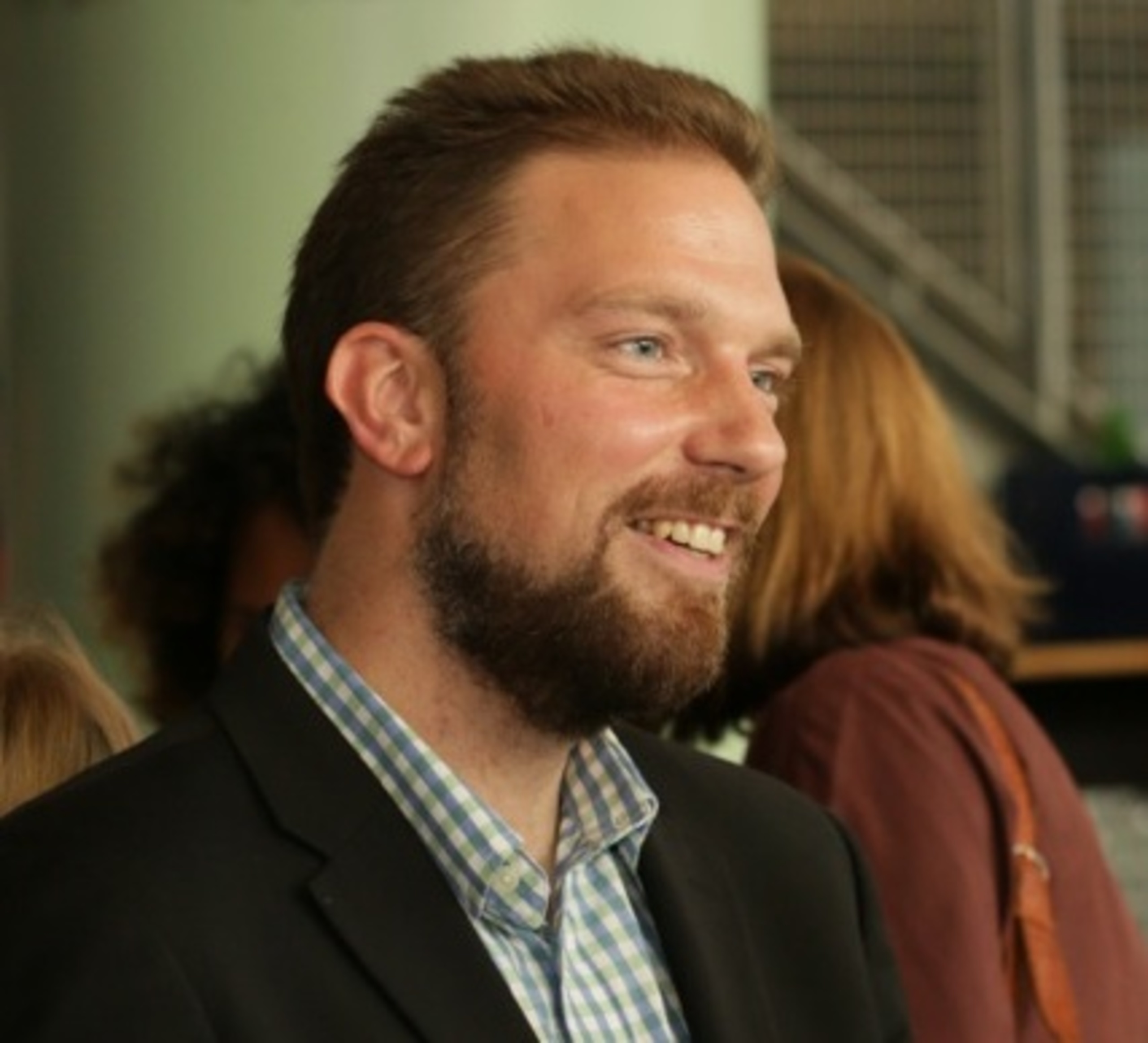- William Myers is de curator van de tentoonstelling Biodesign: over de kruisbestuiving van natuur, wetenschap en creativiteit, georganiseerd door Het Nieuwe Instituut. We vroegen hem naar zijn aanpak voor deze tentoonstelling in het licht van de Nederlande biodesign context. Het interview is alleen beschikbaar in het Engels.

William Myers /1 William Myers is the author of BioDesign: Nature + Science + Creativity, published in 2012 by the Museum of Modern Art in New York and Thames and Hudson in London. Myers has worked with the Solomon R. Guggenheim Museum, the Museum of Modern Art, the Smithsonian Cooper-Hewitt National Design Museum and Genspace, the first community biotech lab in the United States.
The Netherlands has paid a lot of attention to biodesign in the past few years, also in the cultural sector. What does this exhibition add and what do you think and hope it will contribute to developments in this country?
The exhibition profiles several new and international works not yet seen in the Netherlands. These range from a building with analgae-growing facade for biofuel production to startling illustrations of possible animal species we might create in the near future using synthetic biology. There are also works of great potential practicality, such as a home appliance for farming insects to generate a cheap source of protein.
My sincere hope is that the exhibition strengthens the argument for working with biology in creative and respectful ways. And perhaps someof the techniques and materials used in these projects will inspire new work in the Netherlands. This is an appropriate place to have such an exhibition I believe, since the country is largely a designed landscape claimed and kept from the sea. What might be called 'nature' here is often deliberately made; so it is not especially radical to work with biology and find a way to make it useful. In fact, at the beginning of my research several years ago the first biodesign example I found was from TU Deflt - a new type of concrete embedded with microbes that allow the material to self-heal when cracked.
So, the Netherlands is already a rich environment for such experimental work and I hope that continues and expands further. I recently moved to the country and plan to stay here and encourage this development how ever I can, through writing, teaching and exhibitions.
This exhibition doesn't focus so much on the ethical issues around biodesign. Is this a conscious choice?
I think the choice of designing with biology often stems from an ethical decision: to embrace the responsibilities of the designer as more than a giver of form but as an initiator of systems. Every designed object we see represents a cycle in motion, from resource extraction and manufacturing, to marketing, distribution, purchase, use and disposal. Attempting to work with biology to me signals an intent to make these cycles as environmentally and socially healthy as possible. After all, biology works so much more efficiently and effectively than most of our mechanical or industrial processes. That said, the exhibition also includes works that are provocative or beautiful for their own sake, prioritizing aesthetic impact. Other projects are less earnest and even playful. So, while ethical considerations are important, I think they are entwined with but not the focus of this exhibition.
What were your criteria for selecting the projects for this current exhibition (in the light of question 2).
For me the most important criteria where intention, quality of execution and accessibility. If a project was brilliantly conceived but neither developed enough nor readable it was kept out. I also chose works that would give a sense of the variety of techniques and materials as well as the global nature of this work. It can be found in studios, schools and even garages all around the world.
Another way to think of an exhibition is as a collection of ideas supported by objects, images and video. In this sense the works support an overarching thesis: that biology bursts with opportunities for respectful and useful partnership. Growing packaging out of mushroom roots instead of using petroleum products is a strong example. The trouble is that we've been so firmly conditioned to fear biology, to think of it only as germs and a source of disease and uncertainty. We have to unlearn such behavior to escape the modern preoccupation with hygiene and discovery ways that we can utilize biology with awe and deference.
How do you seen the role for artists and designers in the field of biodesign? What needs to be done to encourage their activities in this field?
I see them as provocateurs and pioneers. Thankfully there is a rapidly growing pool of knowledge and potential applications from biology and related disciplines such as biomedicine, ecology and synthetic biology. Designers, artists (and engineers) will continue to draw from this pool for their work, whether it's building a better light bulb using living cells or presenting us with images of a future that might come to pass.
To encourage new work in this area I think it would be helpful to include more instruction in basic biology in design and art curricula. Also important I think is to develop best practices for collaboration across disciplines; there seems to be a lot of talk about how important this is, but not enough instructions on how to do it well.